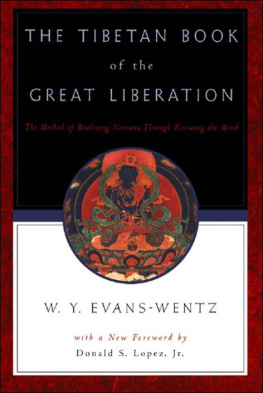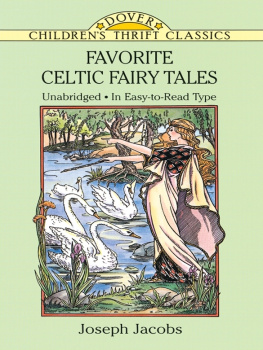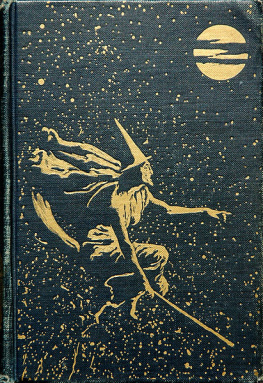PREFACE
During the years 19079 this study first took shape, being then based mainly on literary sources; and during the latter year it was successfully presented to the Faculty of Letters of the University of Rennes, Brittany, for the Degree of Docteur-s-Lettres. Since then I have re-investigated the whole problem of the Celtic belief in Fairies, and have collected very much fresh material. Two years ago the scope of my original research was limited to the four chief Celtic countries, but now it includes all of the Celtic countries.
In the present study, which has profited greatly by criticisms of the first passed by scholars in Britain and in France, the original literary point of view is combined with the broader point of view of anthropology. This study, the final and more comprehensive form of my views about the Fairy-Faith, would never have been possible had I not enjoyed during many months the kindly advice and constant encouragement of Mr. R. R. Marett, Reader in Social Anthropology in the University of Oxford, and Fellow of Exeter College.
During May 1910 the substance of this essay in its pan-Celtic form was submitted to the Board of the Faculty of Natural Science of Oxford University for the Research Degree of Bachelor of Science, which was duly granted. But the present work contains considerable material not contained in the essay presented to the Oxford examiners, the Right Hon. Sir John Rhs and Mr. Andrew Lang; and, therefore, I alone assume entire responsibility for all its possible shortcomings, and in particular for some of its more speculative theories, which to some minds may appear to be in conflict with orthodox views, whether of the theologian or of the man of science. These theories, however venturesome they may appear, are put forth in almost every case with the full approval of some reliable, scholarly Celt; and as such they are chiefly intended to make the exposition of the belief in fairies as completely and as truly Celtic as possible, without much regard for non-Celtic opinion, whether this be in harmony with Celtic opinion or not.
As the new manuscript of the Fairy-Faith lies before me revised and finished, I realize even more fully than I did two years ago with respect to the original study, how little right I have to call it mine. Those to whom the credit for it really belongs are my many kind friends and helpers in Ireland, Scotland, Isle of Man, Wales, Cornwall, and Brittany, and many others who are not Celts, in the three great nationshappily so intimately united now by unbreakable bonds of goodwill and international brotherhoodBritain, France, and the United States of America; for without the aid of all these Celtic and non-Celtic friends the work could never have been accomplished. They have given me their best and rarest thoughts as so many golden threads; I have only furnished the mental loom, and woven these golden threads together in my own way according to what I take to be the psychological pattern of the Fairy-Faith.
I am under a special obligation to the following six distinguished Celtic scholars who have contributed, for my second chapter, the six introductions to the fairy-lore collected by me in their respective countries:Dr. Douglas Hyde (Ireland); Dr. Alexander Carmichael (Scotland); Miss Sophia Morrison (Isle of Man); the Right Hon. Sir John Rhs (Wales); Mr. Henry Jenner (Cornwall); Professor Anatole Le Braz (Brittany).
I am also greatly indebted to the Rev. J. Estlin Carpenter, Principal of Manchester College, for having aided me with the parts of this book touching Christian theology; to Mr. R. I. Best, M.R.I.A., Assistant Librarian, National Library, Dublin, for having aided me with the parts devoted to Irish mythology and literature; and to Mr. William McDougall, Wilde Reader in Mental Philosophy in the University of Oxford, for a similar service with respect to Section IV, entitled Science and Fairies. And to these and to all the other scholars whose names appear in this preface, my heartiest thanks are due for the assistance which they have so kindly rendered in reading different parts of the Fairy-Faith when in proof.
With the deep spirit of reverence which a student feels towards his preceptors, I acknowledge a still greater debt to those among my friends and helpers who have been my Celtic guides and teachers. Here in Oxford University I have run up a long account with the Right Hon. Sir John Rhs, the Professor of Celtic, who has introduced me to the study of Modern Irish, and of Arthurian romance and mythology, and has guided me both during the year 19078 and ever since in Celtic folk-lore generally. To Mr. Andrew Lang, I am likewise a debtor, more especially in view of the important suggestions which he has given me during the past two years with respect to anthropology and to psychical research. In my relation to the Faculty of Letters of the University of Rennes, I shall always remember the friendly individual assistance offered to me there during the year 19089 by Professor Joseph Loth, then Dean in that University, but now of the College of France, in Paris, particularly with respect to Brythonic mythology, philology, and archaeology; by Professor Georges Dottin, particularly with respect to Gaelic matters; and by Professor Anatole Le Braz, whose continual good wishes towards my work have been a constant source of inspiration since our first meeting during March 1908, especially in my investigation of La Lgende de la Mort, and of the related traditions and living folk-beliefs in BrittanyBrittany with its haunted ground of Carnac, home of the ancient Brythonic Mysteries.
W. Y. E. W.
Jesus College, Oxford.
All Saints Day, 1911.
There, neither turmoil nor silence.
Though fair the sight of Erins plains, hardly will they seem so after you have known the Great Plain.
A wonder of a land the land of which I speak; no youth there grows to old age.
We behold and are not beheld.The God Midir, in Tochmarc Etaine.
INTRODUCTION
I have told what I have seen, what I have thought, and what I have learned by inquiry. Herodotus.
I. The Religious Nature of the Fairy-Faith
There is probably no other place in Celtic lands more congenial, or more inspiring for the writing down of ones deeper intuitions about the Fairy-Faith, than Carnac, under the shadow of the pagan tumulus and mount of the sacred fire, now dedicated by triumphant Christianity to the Archangel Michael. The very name of Carnac is significant;[1] and in two continents, Africa and Europeto follow the certain evidence of archaeology alone[2]there seem to have been no greater centres for ancient religion than Karnak in Egypt and Carnac in Brittany. On the banks of the Nile the Children of Isis and Osiris erected temples as perfect as human art can make them; on the shores of the Morbihan the mighty men who were, as it seems, the teachers of our own Celtic forefathers, erected temples of unhewn stone. The wonderful temples in Yucatan, the temple-caves of prehistoric India, Stonehenge in England, the Parthenon, the Acropolis, St. Peters at Rome, Westminster Abbey, or Notre-Dame, and the Pyramids and temples of Egypt, equally with the Alignements of Carnac, each in their own way record more or less perfectly mans attempt to express materially what he feels spiritually. Perfected art can beautify and make more attractive to the eye and mind, but it cannot enhance in any degree the innate spiritual ideals which men in all ages have held; and thus it is that we read amid the rough stone menhirs and dolmens in Brittany, as amid the polished granite monoliths and magnificent temples in Egypt, the same silent message from the past to the present, from the dead to the living. This message, we think, is fundamentally important in understanding the Celtic Fairy-Faith; for in our opinion the belief in fairies has the same origin as all religions and mythologies.







